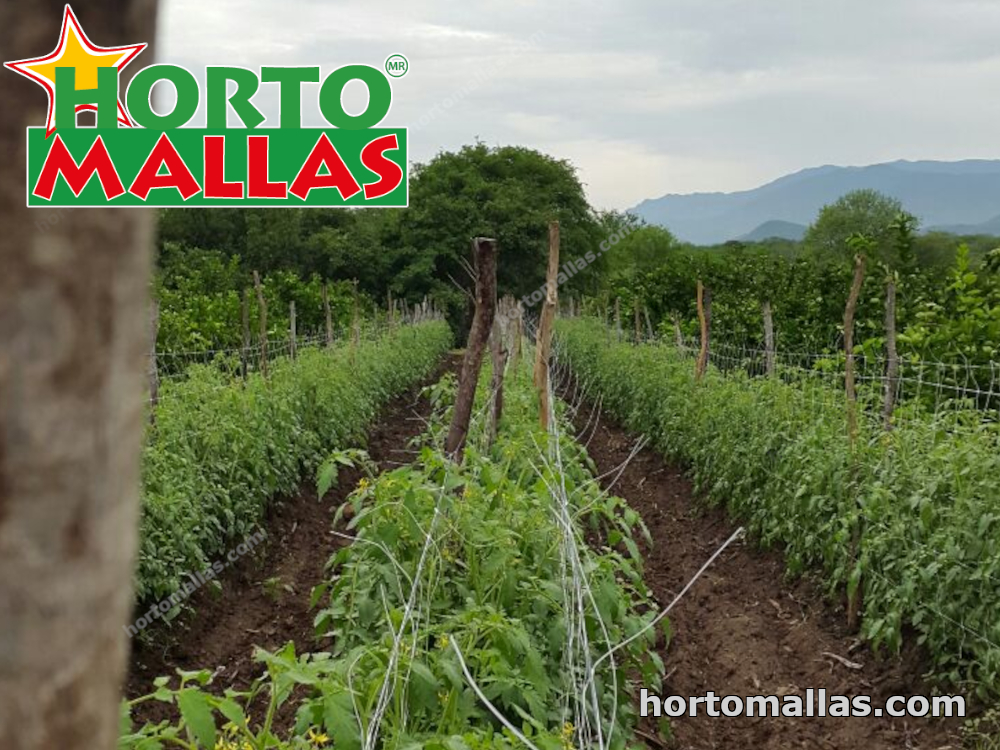Staking Tomatoes with Twine Affects the Productivity
Tomato Needs Care and Support to Grow Healthy
Staking tomatoes with twine is an important technique that might prevent common damages to plants, such as some foliar diseases, sunscalds, and fruit rots. The best for tomatoes is if the staking is applied to a specific tall of the one foot. At that height, it is easy to start and proceed along the vegetable crop. The state of tomato beds inside a vegetable garden can easily transform into an ugly and dirty place. Care and support for tomatoes are necessary in order to grow healthy fruits and to have benefits from your asset. Staking tomatoes with twine is one kind of such support that consequently increases production. It also looks nice in the garden. Support structure depends on the type of the seed. Some sorts of tomato grow to a specific length while the others, especially hybrids, have many varieties. Stakes are sturdy single wooden or metal structures of the 4 feet length (1×1 inches) for determined tomato sorts and 6-7 feet (2×2 inches) for undetermined. The trellis will be stronger with the combination of metal and wooden stakes or if metal posts have been used in the end corners or on each row end. Wooden and metal stakes can also take turns after every 4 to 5 stakes. For determined tomato sorts, it is enough to drive a stake one foot into the ground. However, for the large vines, it is recommended to bury the stakes at least 2 feet. Some stakes are pointed on the bottom to slip into the ground easily. Under no circumstances, use pressure treated lumber since it may contaminate the ground with toxic substances.
Tying Tomato Stems in Accordance with the Staking Method and Technique
Although staking tomatoes with twine is not a complicated process, there are few things you should especially be careful about. Post a stake on the side of the plant, 3 to 4 inches from the base. Install them apart in the row between every other or every 3 plants. That would be enough space to avoid entrapping the fruits between the stake and the plant. When the plants are 1 to 2 inches tall, it is a right time to begin staking tomatoes with twine. Do this at 8 to 10 inches off the ground. You have to start training plants when they are young which is usually only a month after the planting. Not to waste your time, plan the tomato staking techniques and the material you will need in advance. When the time comes, you will be ready. As tomato grows, tie the stems to the supporting stake every 6 to 8 inches. Be careful not to tie them too strong. Tomato stems are sensitive, and they can easily get damaged. You can use garden twine, strips of fabric or a plastic plant tape to tie the stems. The clusters of flowers turn into the clusters of fruits and they may cause ruffling of the stems if they are tied below the clusters. Tie them always just above the flowers to avoid crimping. Depending on the method, tomatoes may be placed closer to each other if they are going to be trained to a single stem. Tomatoes with the multiple stems need a larger area to branch out.
Grow Vegetables Together Vertically within the Same Supporting System
Tomatoes should keep growing upright throughout the season. This plant stretches out by its nature, and to preserve its health and productivity some trellising system is needed to support plants off the ground. In this way, the quality of fruits will not be compromised. Proper air circulation, enough sunlight for each plant and minimized risk of diseases will provide the ideal growing conditions. Staking tomatoes with twine is possible also with the basic tripod of three separate stakes. This extra stable construction is suitable for the areas known for a heavy wind. Tomatoes and Cucumbers are great companions and they can be grown together along with some other sorts of vegetables as well. Insect infestations and plant diseases may be prevented by keeping the plants off the ground. The choice of a method is pretty much yours but the trellis or a cage belong to most common solutions. Cucumber trellis spacing depends on the available area for planting vegetables. By growing the vegetables vertically, you will secure the productivity all season long and you can allow plants enough space to grow safely and undisturbed. In an organized and smartly planned garden, the plants enjoy optimal conditions all the time, you can keep the place clean without much effort, and the harvest is carried out easily, without interruptions.
Multiple Layers of Twine Build Supporting Walls
For staking tomatoes with twine use exclusively the durable ropes that can resist bad weather and the weight of the high plants and ripe fruits. After you have tied the twine to the first stake and passed the next two plants, pull the twine around the second stake tight. The twine should remain tense in front of the plants to provide them a proper support all along the row. At the end of the row, loop back the other direction. You can connect the twine to a plastic pipe to make the weaving easier. This homemade extension of your arm can spare you some physical effort. The procedure should be repeated in a week or two when the plants have achieved certain height. Layers of twine should be added 6 to 8 inches above the last one until you reach the top of the stakes. Walls of twine will keep the plants upright in the rows, and you can start planning the harvest. Staking tomatoes with twine reduces a risk of plant diseases to a minimum since most of them evolve from the moist ground. Pruning is also much easier leading to an adequate air circulation and fast drying of leaves.



